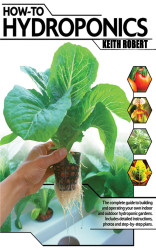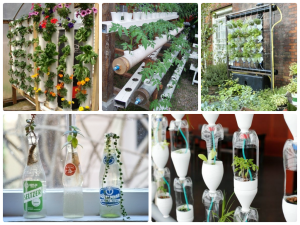What is Hydroponics?
The cultivation of plants with no soil is known as Hydroponics. It is commonly used to cultivate abundant, nutritious indoor vegetation and good high-quality vegetables, fruits and herbs. Indoor plants process nutrients as simple ions in the water. The nutrients in the soil melt in the water and the plant roots take them in. When the plants get sufficient nutrients, the soil is no longer necessary for the plant to survive. With the utilization of appropriate nutrients and the suitable synthetic light supply, an indoor gardener can accomplish remarkable results. A full controlled ecological farming system should have regulated light, temperature, water, CO2, oxygen, pH and nutritional solutions .
Hydroponics is easy and productive. On various days a pH test is completed and the water level is topped up. The nutrient is replaced every 7 – 12 days. To switch the light and garden on and off instantly, a timer is often applied. Within the different types of Hydroponics, deep water is the finest form because the roots are directly uncovered to the nutrient solution. “Deep Water” methods use a tiny air pump to maintain the solution well oxygenated.
Different Methods of Hydroponics
One more system of Hydroponics is the Ebb & Flow or Flooding & Draining systems. The root system and growing mediums like Rockwool are soaked at particular time periods. The Ebb & Flow system makes it less difficult to grow plants in small space. In Deep Water Culture (DWC), using the VIVOSUN New Arrival-DWC Hydroponic System Kit, the roots are left to fall down into an aerated nutritional solution. This solution is aerated with the help of common aquarium pumps and sir stones. The solution has to be topped up occasionally. Drip feeding is very much the same as Ebb & Flow, apart from that the pump provides a constant tickle of nutrients and water. The emitters operate 5 to 10 minutes every hour.
A different method of Hydroponics is Wick feeding, where the plant takes in water with the assistance of a wick that extends from the bottom of the plant container to a container of nutrient feed solution. By means of capillary action, the solution moves up to the plant through the wick. In Raft farming, plants are placed inside sheets of enhanced polystyrene with the roots clinging down through the holes. The sheet is subsequently floated in a shallow container of nutrient solution. In Nutrient film technique (NFT), the plants grow through light-proof plastic films positioned over shallow, softly sloping channels. The roots grow into thick mats with a thin film of nutrients passing over them. Aeroponics is a class of Hydroponics where the roots of a plant are suspended in a midst or fog of nutrient rich solution.
Hydroponics – A Better Choice
Diverse media are used for Hydroponics. Expanded clay, Coco coir, Vermiculite , Rockwool, Perlite and Oasis root cubes are some of them. Due to frequent issues of chemicals and other pollutants in the food source, people are looking for a better choice. Hydroponics fits the qualification adequately.





